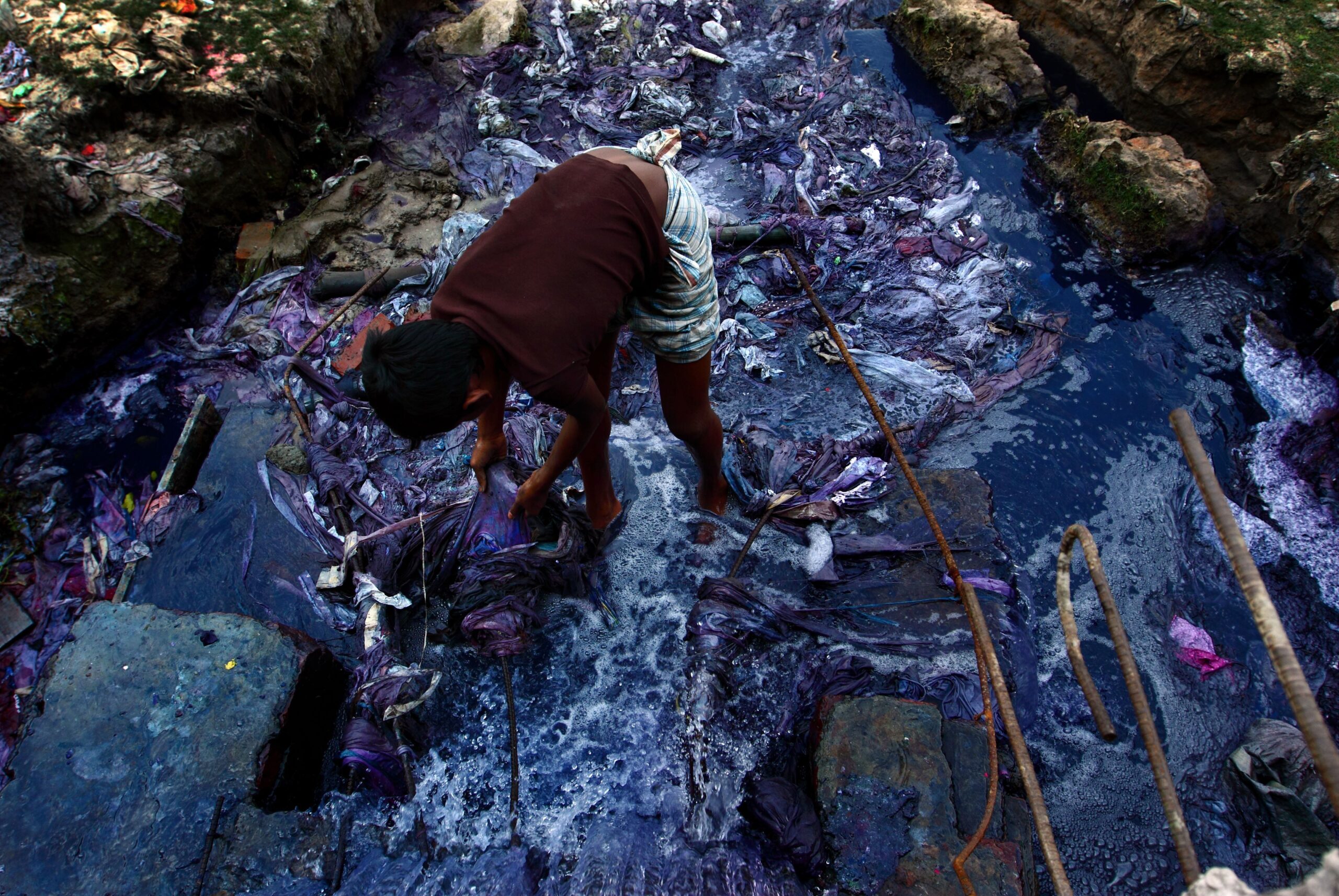
Rivers, lakes and tap water in areas of Bangladesh that host garment factories are swarming with dangerous levels of toxic “forever chemicals,” some with links to serious health issues, according to new research.
In the first study of its kind conducted in Bangladesh, a global fashion hub supplying international brands, per- and polyfluoroalkyl substances, commonly known as forever chemicals, were found in 27 water samples collected close to textile factories in the capital, Dhaka.
In many of the samples, taken in 2019 and 2022, PFAS levels were far above regulatory limits set in the EU and the US, while several contained one or more globally banned chemicals, according to the report by the Environment and Social Development Organisation and Ipen, a network of NGOs.
PFAS are a family of about 10,000 chemicals that have been linked to a wide range of serious illnesses, including certain cancers. They have been used in manufacturing and added to everyday consumer products since the 1950s.
They are called forever chemicals because scientists say they could take hundreds or even thousands of years to degrade after the products they were used in are thrown away. If PFAS leak into water, they could remain there for centuries. The textiles industry accounts for 50 percent of the total global use of PFAS.
“Bangladesh is an international textiles manufacturing hub, and the prevalence of toxic chemical emissions from this sector puts our residents at higher risk,” said Siddika Sultana, the executive director of Esdo in Bangladesh. “The fashion export industry should not get a free pass to contaminate our rivers, lakes and taps with PFAS.”
Certain PFAS have been banned globally under the Stockholm Convention, of which Bangladesh is a signatory, and others are under review. The global treaty aims to protect human health and the environment from the effects of persistent organic pollutants.
Of the 27 samples found with PFAS, 67 percent contained one or more globally banned PFAS chemicals. Samples with high levels were common in areas near textiles factories, suggesting that the industry may be a significant source of water pollution. Samples taken in two waterways downstream from large factories in 2022 showed higher levels of PFAS than samples taken upstream.
The highest PFAS levels were detected in water taken from the Karnatali River at more than 300 times the proposed EU limit. The sample had the highest level of two banned PFAS. These were more than 1,700 times higher than a Dutch advisory limit for perfluorooctanoic acid and more than 54,000 times higher than the limit for perfluorooctane sulfonate.
Bangladesh has no specific regulations for PFAS so the study compared findings with standards in the EU, the Netherlands and the US.
“Bangladesh is a small country with a large population. The water bodies are major sources of irrigation, agriculture, industrial development and drinking water,” Shahriar Hossain, a lead author of the study, said. “We found that water is contaminated with highly toxic chemicals, and consider this a big problem that needs to be addressed.”
“If Bangladesh is a signatory of the Stockholm Convention, it has an obligation to regulate PFAS.”
By Sarah Johnson
Learn more:
Why Fashion Still Uses Toxic ‘Forever Chemicals’
Brands from Canada Goose to Patagonia still rely on PFAS for performance attributes like waterproofing.



